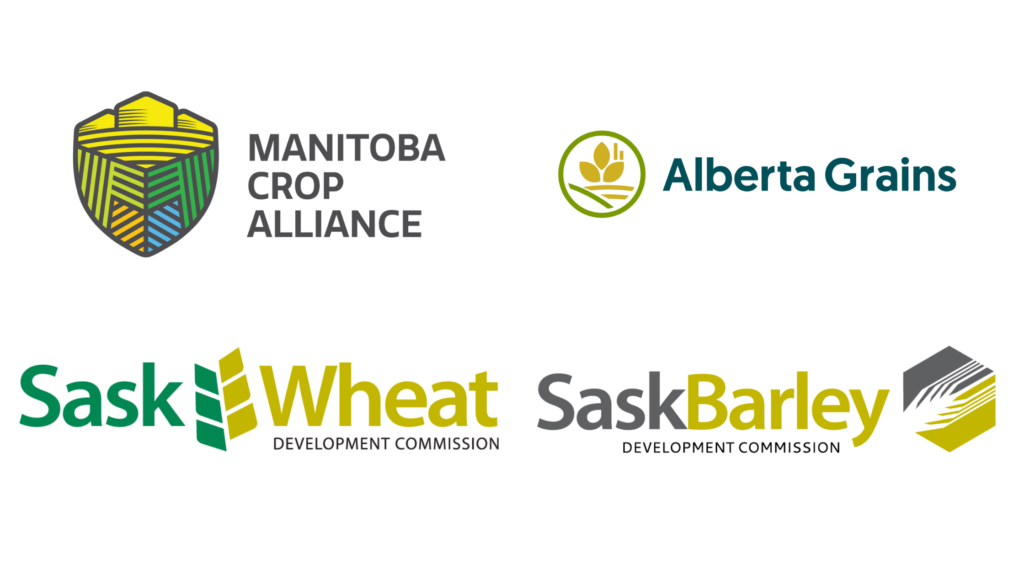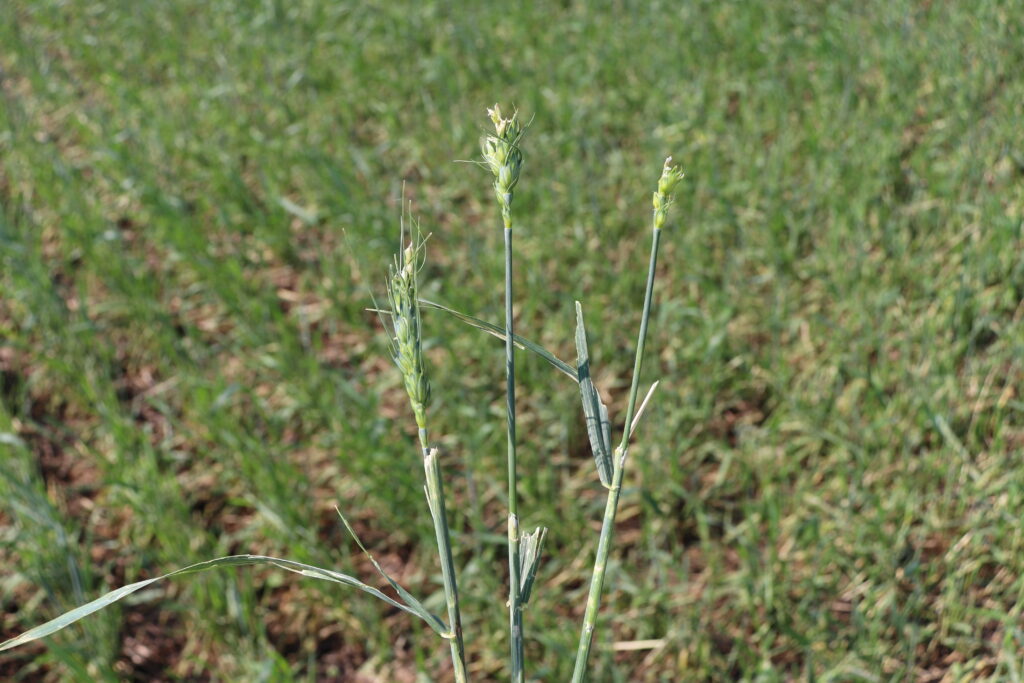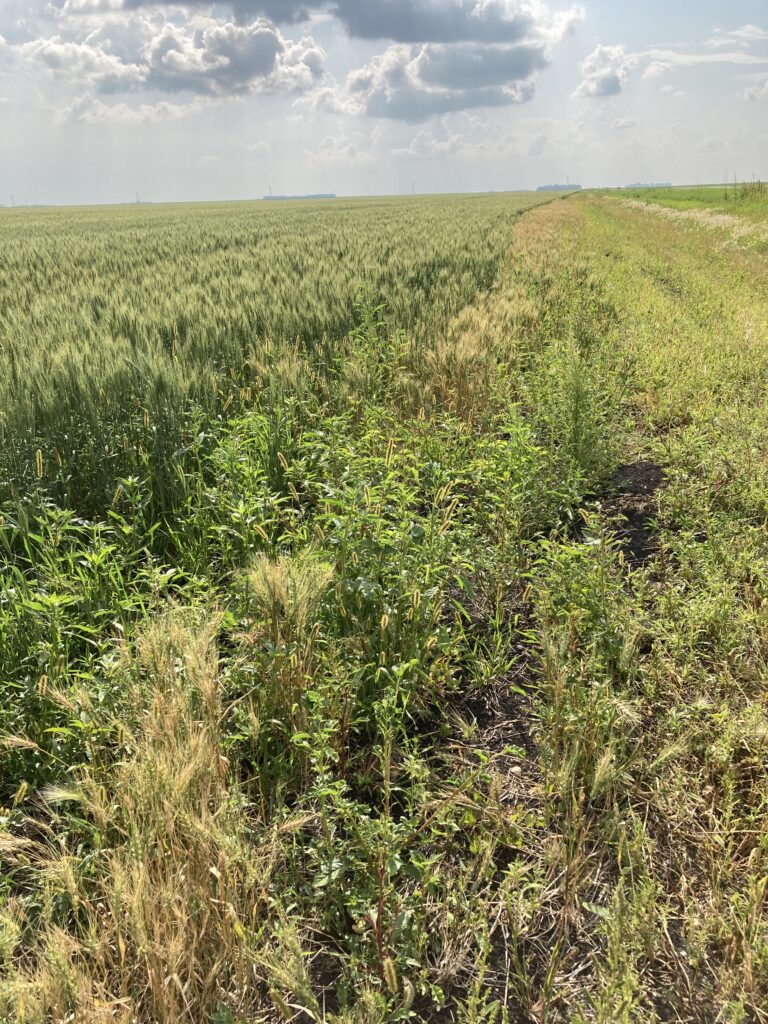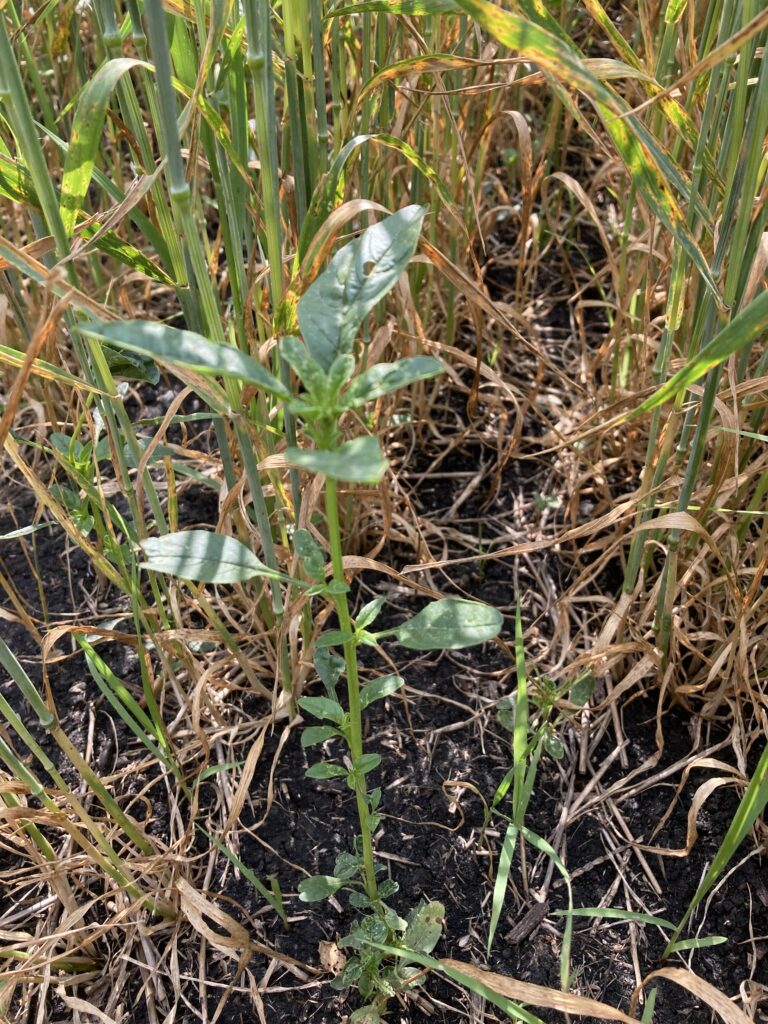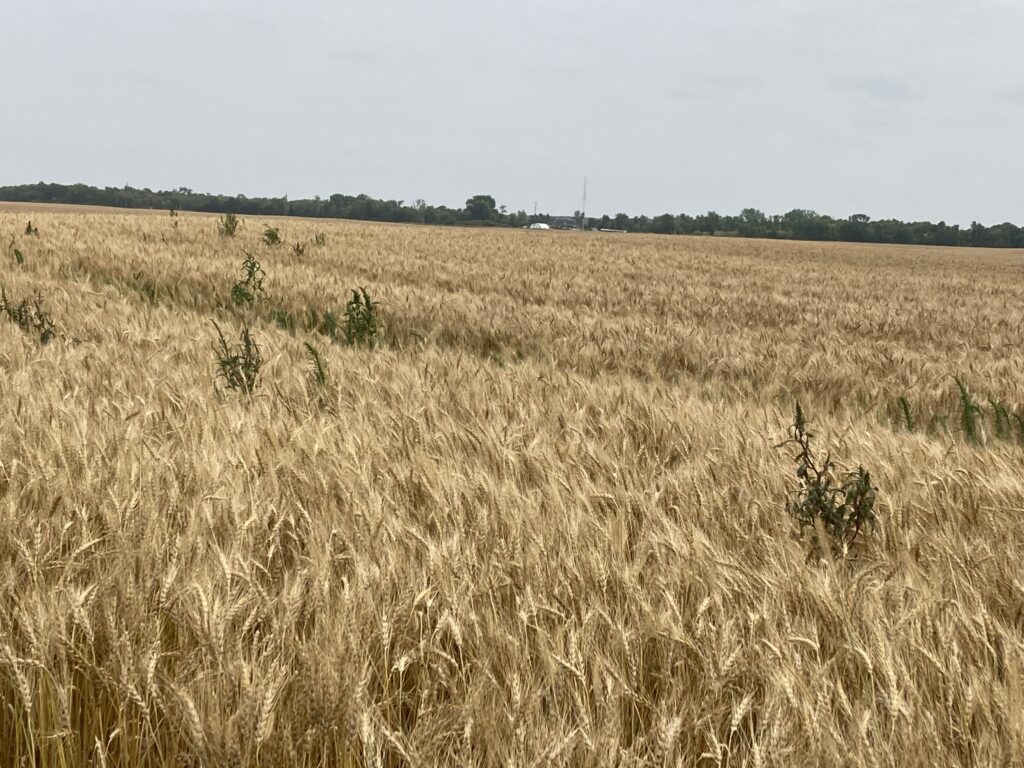Section Title
Cereal Crop Issues of 2023
- Wheat
This resource was created in collaboration between Manitoba Crop Alliance, Saskatchewan Wheat Development Commission, Saskatchewan Barley Development Commission, and Alberta Grains.
As the 2023 crop year wraps up, we take a look back at some of the top crop issues of 2023 including drought, heat, grasshoppers and uneven maturity across the Prairies. Here we provide some background information on each issue as well as possible future mitigation strategies.
1. Drought/Heat
- Alberta, Saskatchewan and Manitoba experienced early-season drought. In Alberta, the South and Peace Region had the most severe drought in spring, with some areas only receiving 10-20mm of rain between April 1and May 29. Starting mid-June, significant rain fell in the northwest and northeast regions, providing drought relief. However, drought conditions continued in the south and some central regions.
- Most of Saskatchewan was dry again this year. “Since April 1, the entirety of the province received 200mm or less of rain with the communities of Leader and Outlook getting less than 75mm. Across the province, cropland topsoil moisture was rated at 13 per cent adequate, 49 per cent short and 38 per cent very short.”1
- Precipitation across the growing regions of Manitoba was variable. Areas of the province near Fisherton received more than 100 per cent of normal precipitation since May 1, while areas in central Manitoba accumulated precipitation below 50 per cent of the 30-year average2.
- Early season drought caused delayed and uneven crop emergence. For example, soil moisture varied within the same field, with some areas receiving more rain while others remained with low soil moisture. Seeds in dry areas emerged later, causing a multi-stage crop field (Figure 1) and agronomic management challenges.
- Warm and dry conditions also sped up the development of crops. Cereal crops under drought stress grew through vegetative growth stages faster causing earlier flowering. This meant in-crop herbicide and insecticide applications were happening right after seeding wrapped up for many producers. At the same time, some producers were in a position of seeing minimal weed pressure due to drought. This meant they had a smaller window to apply herbicides due to crop advancement.
- Cereal crops are most sensitive to drought at tillering and anthesis. Drought during tillering led to fewer tillers and lower plant stands later in the season. Drought during anthesis resulted in lower kernel numbers and kernel weight. Wheat and barley plants require 4-5 inches of moisture from emergence to the reproductive growth stage where they can produce grains. The peak water need is at heading stage, when the water use is up to 7-8 mm per day. Under ideal conditions, Alberta research showed that for every inch (25 mm) of water used, wheat produces 5-7 bu/ac, while barley produces 7-9 bu/ac3.
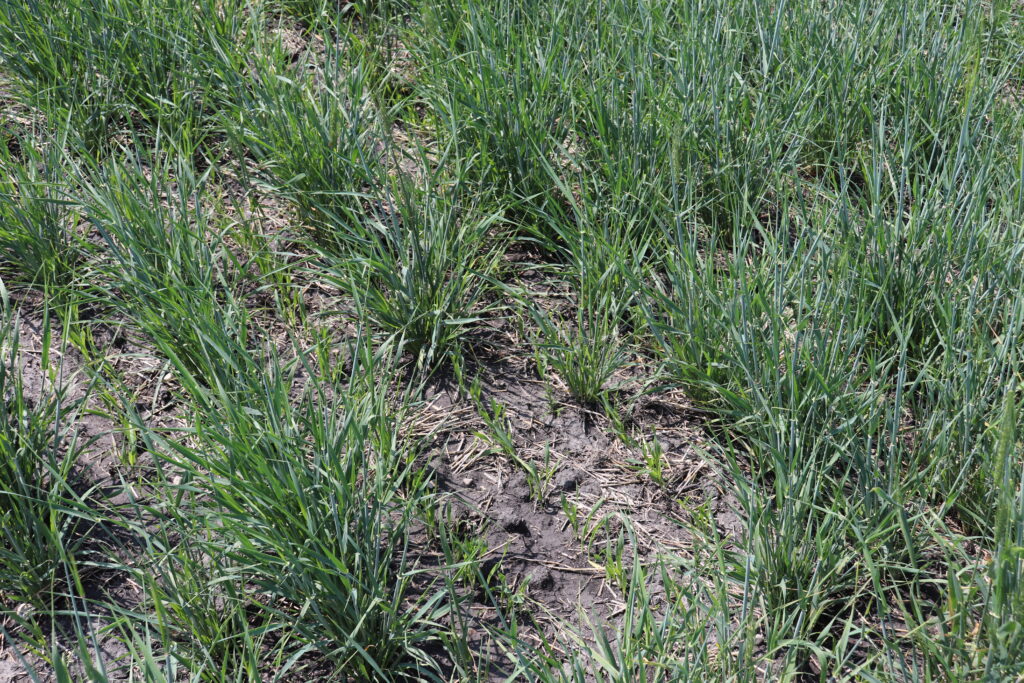
Figure 1: Example of uneven cereal emergence. Image courtesy of Manitoba Crop Alliance.
Examples of yield reduction reported across the provinces:
- In the driest regions of Manitoba, extreme lows of 16 bu/ac yields have been reported for spring wheat, although these reports are localized. Spring wheat yields ranged from 35 – 65 bu/ac2. Yields were variable across all growing regions.
- The south region of Alberta (Strathmore, Lethbridge, Medicine Hat, Foremost counties) experienced the most severe drought in 2023. The estimated dryland yield for spring wheat is 25 bu/ac in the south region4.
- In Saskatchewan producers saw varying yields for all crop types. In the southwest, yield averages were well below provincial averages. While moisture in the northeast has led to above average yields. Hard Red Spring Wheat is provincially estimated at 42 bu/ac, durum yields are estimated at 23 bu/ac and barley is estimated at 53 bu/ac5.
There are several management practices that can be implemented to help mitigate, conserve, or capture soil moisture and delay drought conditions:
- No-till or reduced tillage systems are beneficial when conserving soil moisture. With each tillage pass, the soil loses about 0.5 to 1 inch of water 6. In no-till systems, previous year’s crop residues act as a cover, reducing moisture loss via evaporation. No-tillage or reduced tillage has been widely adopted, especially by producers across the western Canadian Prairies partly for this reason.
- Leaving standing stubble is a practice which can promote snow trapping, with higher stubble heights typically catching more snow. The trapped snow can be a source of moisture in the spring, improving the soil water reservoir. In addition to snow capture, taller stubble reduces moisture losses early in the growing season.
- Practices intended to increase soil organic matter (SOM) can be implemented to mitigate the effects of drought. SOM has been found to improve water infiltration and retention. This means less water is leaving the field and more is available for plant uptake.
- Although weather conditions after seeding cannot be predicted, farmers seeding into dry soils can also implement tactics to mitigate crop impacts. See Seeding wheat and barley into dry soils.
For more information on the impact of drought on wheat development and SOM building practices visit the links below:
- How do warm and dry conditions affect wheat and corn development? | Manitoba Agriculture
- Tillage, Organic Matter, and Crop Residue Management | Manitoba Agriculture
2. Grasshoppers
The warm temperatures in spring caused grasshoppers and many other insects to develop faster than normal this year. The first adult two-striped grasshoppers were collected in mid-June in Alberta and Saskatchewan. Overall, grasshoppers developed to adult stage nearly two weeks earlier than a “normal” year 7.
For this reason, grasshoppers were causing feeding damage a lot sooner than normal. This caused many producers to have to control grasshoppers multiple times to minimize impacts.
The key tips of grasshopper management are:
- Early and continuous scouting to manage issues when they arise.
- Maintain awareness of regional grasshopper development through the Prairie Pest Monitoring Network.
- Manage the population early: grasshoppers are more susceptible at earlier instars.
- Practice integrated management: use a combination of cultural and chemical practices, such as seeding early, using trap strips around the field, and use of insecticides when grasshopper population exceed economic threshold (12 per square metre).
For more information check out our joint document: Grasshoppers: Forecast, Monitoring and Management
Also check out the provincial grasshopper forecast maps:
- Grasshopper Forecast | Manitoba Agriculture
- Grasshoppers – Survey and maps | Alberta.ca
- Grasshopper Forecast Map | Insects | Government of Saskatchewan
3. Precipitation Events
Once the moisture did fall, it brought heavy localized flooding and hail to many areas causing crop damage. One of many examples being the late July storm that passed through the Swift Current area, destroying crops and thousands of AAFC research plots. Other than these intense precipitation events, many areas in Saskatchewan did not receive significant rainfall until the combines started to roll. The Saskatchewan Crop Reports from Aug. 8-21, 2023, reported scattered showers across the province causing harvest delays 6. These rainy harvest delays caused potential quality issues such as those caused by sooty mould and chitting (pre-harvest sprouting in barley). Sooty Mould can cause discolouration of kernels and possible black point which can cause degrading. For more information on what sooty mould is check out this document.
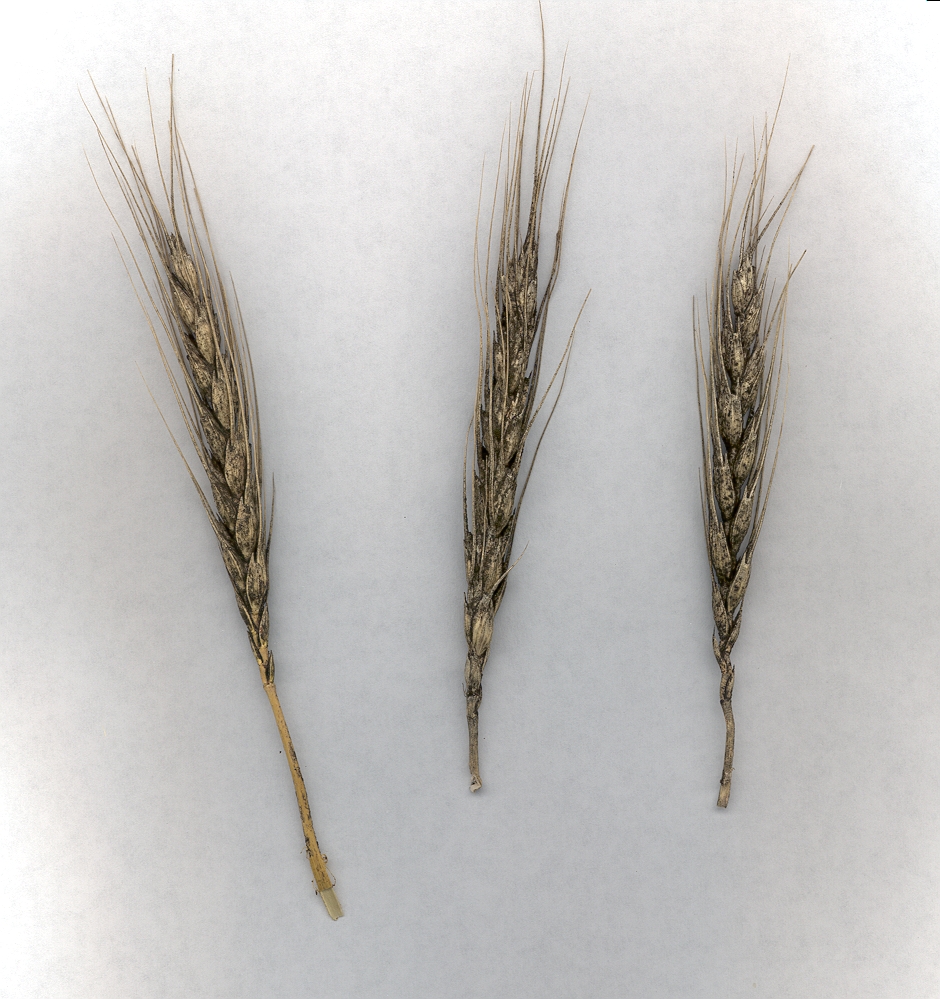
Figure 2: Sooty Mould caused by rain during harvest. Image courtesy of Kelly Turkington, AAFC.
Localized late season rains and hail in Manitoba caused significant damage to standing cereals crops. Affected areas included the Interlake, northwest and eastern regions of Manitoba. Damage ranged from lodging to destroyed wheat and barley stems and heads (Figure 3). Due to the late crop growth stage, there was limited ability for the plants to recover from the hail, resulting in significant damage and yield loss. It has been found that late growth stage hail damage reduces yield but can also affect thousand kernel weight. Additionally, lodged crops posed harvest and grain quality challenges, as kernel quality and sprouting issues are a concern.
There are not many management options available after hail but some things to keep in mind are:
- Call your crop insurance adjuster (if you have coverage).
- Take note of how long the hail lasted, how big the hail was, how big of an area was affected and the crop growth stage.
- Wait a few days to assess damage. This can give you a more accurate picture of what is regrowing. Earlier growth stages have a better chance of regrowth than a more mature crop.
- Once the level of damage has been determined it is time to decide what to do with the crop. If there is minimal damage, the crop can recover and might only have minimal yield implications. If there is major damage the crop might have to be taken for feed or plowed down.
- Keep in mind that crops that have experienced hail damage are more susceptible to disease.
- Hail damage to crops can be variable. Hail is also very challenging to replicate for small plot trial purposes. Therefore, at this point, there is no reliable research indicating economic value of post-hail damage applied products.
4. Uneven Maturity
Many drought-stricken parts of Alberta saw cereals pushing tillers in mid-June. Subsequent rainfall in parts of northern Alberta in late June caused a second full flush of tillers across entire fields leading to two-staged crops. Staging between the tiller flushes during milk/dough stage were 1-2 weeks apart (Figure 4 & 5). Uneven maturity and late tillers were also found throughout Manitoba. This uneven maturity within fields resulted in difficult harvest management decisions to be made. However, there are steps that should be considered when making management decisions on late tillers:
- Understand your target markets tolerance for greens. Refer to Canadian Grain Commission and/or local elevators about the tolerance levels.
- Evaluate cleaning, drying and storage risks. Grain stored with high moisture greens can increase the risk of grain spoilage and reduce grain quality.
- Scout your field to determine the percentage of late tillers it contains and if they will have a significant impact on yield. This information will assist in determining the market value of late tillers and the risk associated with letting those tillers mature. This, plus determining the ratio of early to late tillers, and the differences in kernel number and size can help guide late tiller management decisions.
- The growth stage of late tillers should also be established, specifically kernel maturity. As glyphosate has no language on its label around late tiller management and pre-harvest glyphosate application. It is important to note that according to Keep it Clean guidelines, pre-harvest glyphosate should only be applied for pre-harvest weed control once grain moisture is less than 30% in the least mature crop area. If pre-harvest glyphosate is not an option, then swathing should be considered.
- Swathing is not an easy decision, especially in areas with higher risk of fall rain. Swathing can help, although not completely resolve, uneven crop maturity. However, a swathed crop that receives rainfall is at risk of worsened quality issues. Therefore, market risk, farm post-harvest grain handling capabilities, rainfall, and farm risk tolerance must all be considered when using swathing to help with maturity issues.
- Keep up to date with your local weather forecast conditions as it can provide information to estimate days to dry down or rain risks if swathing fields.
- Lastly, think about managing harvest in different zones depending on late tiller locations and maturity. This can be an option if there are a small number of areas that are delayed. However, if there are numerous areas, this may create its own logistical challenges.
Refer to the Managing Late Tillers in Wheat and Barley document for more information on tiller harvest management practices.
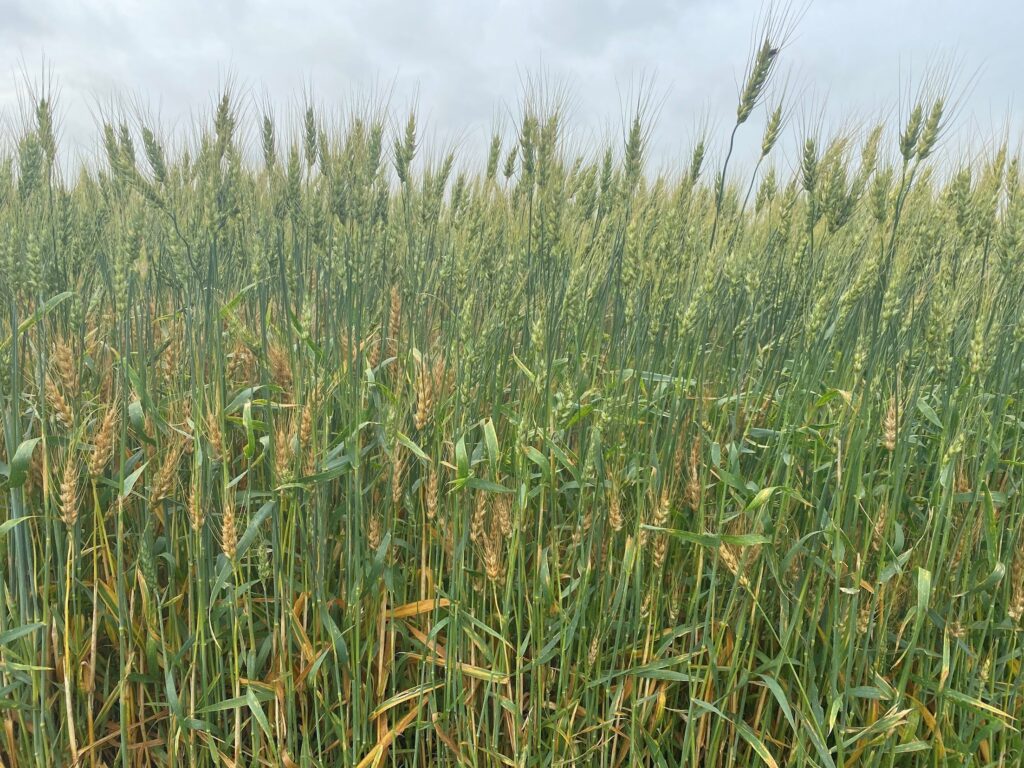
Figure 4: Multi-stage wheat crop near Barrhead, AB. Image courtesy of Alberta Grains.

Figure 5: Multi-stage wheat crop near Barrhead, AB. Image courtesy of Alberta Grains.
Drought, grasshoppers, hail/heavy rain and uneven maturity were just a few crop issues seen around the Prairies this year. While there is little we can do to mitigate effects of extreme weather on crops, we can try to plan ahead for issues we can control next year.
As we move forward into another crop year these are issues to keep an eye on across the Prairies:
Spread of waterhemp and Palmer amaranth
Waterhemp and Palmer amaranth are pigweeds in the genus Amaranthus. While more common members of this genus such as redroot pigweed are familiar to farmers, waterhemp and Palmer amaranth are new to Western Canada. Not yet identified in Saskatchewan or Alberta, both species of concern have been found in Manitoba. While identifications of Palmer amaranth in Manitoba remain limited, more waterhemp infestations were identified in 2023 than in previous years.
Waterhemp and Palmer amaranth are dioecious, meaning they have separate male and female plants and must outcross to produce seed. The result is high genetic diversity and the ability to transfer herbicide resistance traits through pollen. In Manitoba, populations of waterhemp have been found that are resistant to several herbicide groups, including combinations of Group 9, Group 2 and Group 14. In Ontario, waterhemp with five-way resistance (Groups 2, 5, 9, 14, 27) has been found, and in the U.S., waterhemp populations with resistance to combinations of Groups 2, 3, 4, 5, 9, 14, 15, 27 have been detected.
Both waterhemp and Palmer amaranth have smooth hairless stems, which can be a distinguishing characteristic from other pigweeds, which tend to have hairy stems. In Manitoba, waterhemp and Palmer amaranth have been shown to outcross or hybridize with other pigweed species, which can make visual identification difficult. Suspicious pigweeds should be removed and identified through DNA analysis.
While it's especially important to monitor for these weeds in crops that are grown in a wide row (e.g., corn, soybean, drybeans, etc.), they can also be found in more competitive cereal crops.
Species Identification Guides:
- Identification, Biology and Control of Palmer Amaranth and Waterhemp in North Dakota
- Cornell University Pigweed Identification Guide
DNA Testing for Amaranth Species Identification:
- Pest Surveillance Initiative (Winnipeg, MB)
- TurnKey Genomics Inc. (Guelph, ON)
Emergence of Group 14 Resistant Kochia
In 2021, the first Group 14 resistant kochia population in Western Canada was found in central Saskatchewan. The population emerged after the adoption of Group 14 herbicides as a tool to manage glyphosate resistant kochia. According to lab tests, the population survived saflufenacil up to 33 times the standard field rate. Across the border, researchers from North Dakota also identified suspected Group 14 resistant kochia in 2022.
Currently, Group 14 resistant kochia is not widespread in Western Canada. So far, the population from central Saskatchewan is the only one identified. However, herbicide resistance traits can spread rapidly in kochia populations. Amid the resistance to multiple herbicide groups, it is important to contain the spread of Group 14 resistant kochia. Producers are encouraged to keep an eye out while scouting and send suspected kochia population for lab testing. 9
References
- Grain News. Saskatchewan Crop Report: Dryness continues as harvest begins - Grainews.
- Province of Manitoba – Agriculture. Manitoba Crop Report Issue 19.
- Government of Alberta. Crop Water Use and Requirements.
- Government of Alberta. Alberta Crop Report – September 5, 2023.
- Government of Saskatchewan. Saskatchewan Crop Report August 29 – September 4, 2023
- Government of Saskatchewan. Saskatchewan Crop Report August 8 – 14, 2023
- Top Crop Manager. Understand Crop Water Use to Guide Management.
- Prairie Pest Monitoring System. 2023 – Week 12 Updates.
- The Western Producer. Group 14-resistant kochia found in central Sask.

